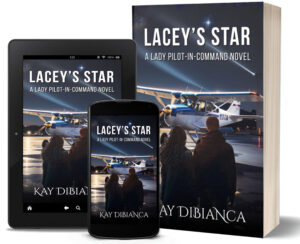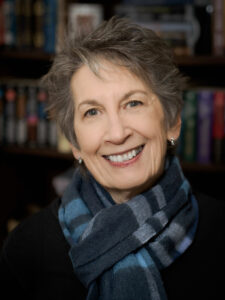“When vultures surround you, try not to die.” — African proverb
By PJ Parrish
Hey, it’s good to be back at The Kill Zone. It’s good to be anywhere. (Apologies to Keith Richards). Holidays and a bout with RSV behind me, I’m ready to get going again. The fact that my Lions beat the NFC norsemen for the No. 1 seed has me doing a happy-dance. Just wish my dad Al were around to have seen it since he almost put his foot through the Zenith after a particularly brutal season back in 1959.
Today, I have the pleasure of critiquing a nice entry in our First Pagers. I took a liking to it when it first popped up on my radar. Maybe because it involves a mysterious priest and I loved the papal thriller Conclave. Best line of dialogue, delivered by a cardinal played by Stanley Tucci: “I could never become Pope on those circumstances. A stolen document, the smearing of a brother cardinal. I’d be the Richard Nixon of Popes.”
Our writer calls their submission a “psychological thriller with supernatural undertones.” Title: Campus of Shadows. (more on that at end). Here we go:
CHAPTER 1
My new apartment complex is painted yellow with black trim and has a scrawny hedge bordering the single-story structure. As I climb out of the car my nose shudders at the scent of something dead in the air. I glance around expecting to see a dead possum or a bird that flew into a window but find nothing. The tune, Bad Guy, blasts from the apartment’s inner courtyard. I can’t wait to get in there and check it out. I hesitate with my thumb on the lock button wondering how hard college classes will be, if I’ll be able to take it all in stride.
A constant ticking draws my attention to a vulture in a gnarled oak with branches twisted so low they could trip someone up. The vulture is the reason for the stench. It must have the remains of something stuck in its talons. A strange curiosity draws me closer like a rubbernecker on the highway and I spot a shadow hovering around it, a miniature cloud.
Maybe some fool around here feeds it. Spinning away, I discover a priest walking toward me from the courtyard of the apartment. His gait and his toothy smile are familiar. “Father Aether?”
“David Everest, how are you?”
“I didn’t expect you to be the first person I saw when I got to college,” I laugh, extending my hand.
“It’s been a long time.” His outstretched hand and mine connect.
“Oh,” he tugs his hand away. “I got a shock.”
“Sorry, I must have created static electricity when I slid out of the car. Didn’t you get transferred to Miami, Father?”
“I did. I was here for a… meeting. A soul freeing of sorts.” A bead of sweat trembles on his jawline. “Anyway, I have a friend whose daughter left something at home in Miami last week. I dropped it off for her.”
“That was nice of you.”
A gust of wind howls through the courtyard entrance blasting me in the face and tearing at his vestments. He shivers and backs away. “I need to go. Bless you, my son.”
As Father Aether hurries off, I’m glad he didn’t ask too many questions. I’ve hardly been to church since he did my first communion. The ticking sound starts again. The vulture is staring at me with a weird look like it’s waiting for something. “Get out of here you dumb scavenger.”
_____________________________
Let’s start with what I liked. There’s a nicely developed (if a tad undercooked) sense of tension right from the start. The main character is entering a new life and environment (college) and immediately interacts with a somewhat mysterious priest from his past. There are some atmospheric descriptive details — a hot gusty wind, gnarly oaks, and the shock-handshake is a nice touch. And then there’s that lurking vulture. (symbolism alert!)
Though written in first-person, the writer deftly handles the insertion of the protag’s name via the simple device of introduction with the priest. I pay attention to this sort of thing because too many folks writing in first person forget to identify their protag until too late in the chapter.
So, I’d call this a good start of a first draft. But it can use some beefing up here and there.
First, the opening line is very weak. My new apartment complex is painted yellow with black trim and has a scrawny hedge bordering the single-story structure. Unless this apartment is in a decrepit Victorian, a New Orleans whore house, or a remodeled abandoned Catholic church (oooh, I like that!), who cares what it looks like? Never waste your first line on something meaningless. Unless the description directly supports your mood, atmosphere or foretells something about character or plot, get rid of it.
Consider something like this as your opening, dear reader:
The smell hit me as soon as I got out of my car. Foul, like rotting meat, or that sweet-sewage stench that I had smelled as a kid when I had wandered into the basement lab of my father’s mortuary.
I heard a loud hiss and looked up. A huge black bird with a bald red head was perched on the lowest branch of the oak tree. It was so close I could see its black-bead eye. A turkey vulture. But what the hell was it doing here on campus? We were at least ten miles from any landfill or scrub land.
I know about turkey vultures since I used to live in South Florida. They are butt-ugly, creepy and they make this nasty hissing noise if you get close. They hang out along remote highways, or near the Everglades, maybe on farms. Never in urban areas. So for this charcter to see one here MEANS something is wrong. USE THIS!
The vulture is not supposed to be here. So make that foul smell work harder as a symbol of a rift in the norm.
An aside: Don’t know if you realize this, writer, but vultures have quite a role in Christian lore. They are considered a symbol of God’s judgment of shame, or a diseased spiritual condition. In Revelation 18:2, Babylon is described as being “a dwelling place of demons, a prison for every foul spirit, and a cage for every unclean and hated bird.”
Something to explore maybe: Birds are powerful symbols in all religions. In Hinduism and Judaism, they are even linked to exorcisms. Christianity is rife with bird symbols, good and evil.
Let’s talk about the sense of smell. It’s the single most powerful one in your writer’s toolbox. I’d like to see the writer exploit this more. And if you can, relate the smell — always — to something directly in the character’s experience. I made up the bit about dad being an undertaker. But see what it does? It personalizes the smell AND slips in a grace note of backstory.
Makes your descriptions work harder.
Other things: I’m not a big fan of persent tense first person. But that’s just my taste. What do you all think? I think it gets a little tiresome for most readers over the course of 300 pages or so.
I surmise that we are in South Florida here, given the turkey vulture and the reference to Miami. But is there some way you can gracefully let us know exactly where we are? Can you slip in where he’s going to college? Is there an UM ibis flag in an apartment window?
And let’s talk about the song “Bad Guy.” I don’t mind songs being tossed into scenes (unless it’s Coltrane blaring on the CD player while the dissipated PI drinks himself into a coma-funk — cliche!). Being an old fart, I had to look up “Bad Guy.” It’s by Billie Ellish and it’s about guys who put up a fake tough-guy front. I like that. But only if it means something about your plot or character. Otherwise, it’s just a gratuitous toss-in culture reference. Of course you can’t reprint lyrics in your book, but maybe, as your character goes into his apartment moments later, the song keeps bouncing around in his head — for some reason! Again, like the vulture — you felt compelled to put it there so make it mean something.
That’s it. Like I said, a good start. But look for places to go deeper, to give meaning to the bread-crumb symbols you are planting. But so far, pretty darn good.
Let’s do a quick, light line edit. My comments in red.
Campus Of Shadows Work harder to find a better title. “Campus” is such a blah geographic signpost word. We KNOW this takes place at a college. Ditto “Shadows” is dime-a-dozen title word in crime fiction, like “death” “darkness” “evil”. You can do better. Finish your book. The real title might reveal itself as you move on.
My new apartment complex is painted yellow with black trim and has a scrawny hedge bordering the single-story structure. As I climb out of the car you backed into the image here. Starting a book with “As I did…” is throat-clearing and passive. Be active: The smell hit me as soon as I… Can you imagine starting a fight scene like this: “As my heart raced, the bullet whizzed by my head.” No, you can’t. my nose shudders at the scent of something dead in the air. I glance around expecting to see a dead possum or a bird that flew into a window but find nothing. I looked up. Then stay with the vulture The tune, Bad Guy, blasts from the apartment’s inner courtyard. I can’t wait to get in there and check it out. I hesitate with my thumb on the lock button wondering how hard college classes will be, if I’ll be able to take it all in stride. Put this down below, after the priest leaves. His feelings about going to college are out of place here and leech out the tension.
A constant ticking souds like a branch against a window or a clock. Vultures hiss. draws my attention to a vulture in a gnarled oak with low twisting branches twisted so low they could trip someone up. The vulture is the reason for the stench. It must have the remains of something stuck in its talons. A strange curiosity draws me closer like a rubbernecker on the highway cliche and I spot a shadow hovering around it, a miniature cloud. Not sure I understand what you’re going for here. Be clearer.
Maybe some fool around here feeds it. Spinning away, implies fright. He’s scared? I discover see a priest walking toward me from out of the courtyard of the apartment. His gait and his toothy smile are familiar. “Father Aether?”
There is a very gusty wind, you say. So use it. How about something more mysterious: I see a figure coming out of the courtward, head bent against the hard dry wind. He’s dressed in black robes, flapping around him like wings. (bird imagery!) As he nears, I see his white collar.
“Father Aether?”
He stops. “David Everest, how are you?” NICE WAY TO GET THE NAMES IN
“I didn’t expect you to be the first person I saw when I got to college,” I laugh, extending my hand.
“It’s been a long time.” His outstretched hand and mine connect.
“Oh,” he tugs his hand away. “I got a shock.”
“Sorry, I must have created static electricity when I slid out of the car. Didn’t you get transferred to Miami, Father?”
“I did. I was here I’ve been here in Palm Beach or whatever for a… meeting. A soul freeing of sorts.” Exorcism? A bead of sweat trembles on his jawline. “Anyway, I have a friend whose daughter left something at home in Miami last week. I dropped it off for her.”
“That was nice of you.”
A gust of wind howls through the courtyard entrance blasting me in the face and tearing at his vestments. He shivers David is starting school somewhere in South Florida in August or September, the hottest months of the year. Shivers? and backs away.
New graph “I need to go. Bless you, my son.” This seems unnaturally abrupt. Did you intend this? If so, it needs something, a gesture perhaps, to predicate it. He glanced back at the courtyard, his eyes lingering on the second floor. He shivered, despite the heat. Or something better.
As Father Aether hurries off, there’s that “as” construction again. We all have our tics! I’m glad he didn’t ask too many questions. He didn’t ask ANY. I’ve hardly been to church since he did my first communion. The ticking sound hissing starts again. The vulture is staring at me with a weird look like it’s waiting for something. A little too spot-on. Of course they stare — they’re looking for carrion.
need new graph. “Get out of here you dumb scavenger.” Can you think of a juicier line or action? What is going to happen next? I assume he goes up to his new apartment? What can happen with the symbolic vulture that TRANSITIONS to what comes next? I can’t suggest cuz I don’t know your plot. But his dialogue line feels flaccid.
So, that’s it from me. I’m sure our TKZ folks will have other helpful insights. Thanks for submitting, dear writer. Keep moving forward. Happy and healthy new year.











 The teaser prologue more often than not presents itself as an exciting coming attraction, as if to tell the reader, Honestly, don’t be turned off by the first five boring chapters. It’ll get interesting, I promise. Maybe it will, but even in the best case, the writer has tipped their hand to peril that we, as readers, know is coming. The prologue squanders drama, and there is no greater sin. The better solution would be to rewrite the boring chapters so that the exciting story builds consistently.
The teaser prologue more often than not presents itself as an exciting coming attraction, as if to tell the reader, Honestly, don’t be turned off by the first five boring chapters. It’ll get interesting, I promise. Maybe it will, but even in the best case, the writer has tipped their hand to peril that we, as readers, know is coming. The prologue squanders drama, and there is no greater sin. The better solution would be to rewrite the boring chapters so that the exciting story builds consistently. The backstory prologue screams to me of a structural issue with the story. Relevant events from a character’s past are better revealed as references during the front story. An example I like to use when I teach deals with Harry Potter–specifically with regard to the need to start a story in the right spot. When I ask the class when Harry’s story begins–not where the book begins, but when the story begins–ten out of ten students will agree that it begins with Hagrid delivering infant Harry to the Dursley’s doorstep. And they are wrong. Harry’s story begins when his parents were themselves students at Hogwarts and giving Snape a hard time. I personally believe that JK Rowling was a genius to start the story in the middle and bleed off the details of backstory as the front story progressed.
The backstory prologue screams to me of a structural issue with the story. Relevant events from a character’s past are better revealed as references during the front story. An example I like to use when I teach deals with Harry Potter–specifically with regard to the need to start a story in the right spot. When I ask the class when Harry’s story begins–not where the book begins, but when the story begins–ten out of ten students will agree that it begins with Hagrid delivering infant Harry to the Dursley’s doorstep. And they are wrong. Harry’s story begins when his parents were themselves students at Hogwarts and giving Snape a hard time. I personally believe that JK Rowling was a genius to start the story in the middle and bleed off the details of backstory as the front story progressed.









 Shalah Kennedy has dreams of becoming a senior travel advisor—one who actually gets to travel. Her big break comes when the agency’s “Golden Girl” is hospitalized and Shalah is sent on a Danube River cruise in her place. She’s the only advisor in the agency with a knowledge of photography, and she’s determined to get stunning images for the agency’s website.
Shalah Kennedy has dreams of becoming a senior travel advisor—one who actually gets to travel. Her big break comes when the agency’s “Golden Girl” is hospitalized and Shalah is sent on a Danube River cruise in her place. She’s the only advisor in the agency with a knowledge of photography, and she’s determined to get stunning images for the agency’s website. Like bang for your buck? I have a
Like bang for your buck? I have a 